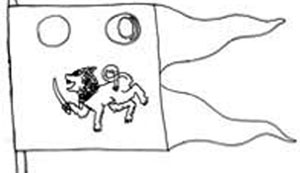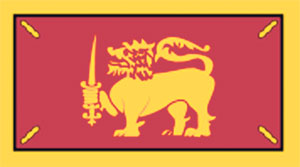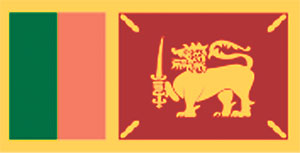Daily Candy Website proclaims 'Best place we've ever been'
The New York Times has named Sri Lanka as the No. One travel destination worldwide in a ranking of '31 Places To Go in 2010.' At the same time, Daily Candy, a luxury-living website, has devoted its entire travel issue to Sri Lanka, informing the readers that you'll be roaming the south for adventure (elephant safaris), history (colonial fort towns, old Buddhist temples), rain forests (and mountains and tea plantations), and beautiful beaches. It's pretty much the best place we've ever been.

Both articles note that security is no longer a concern since the recent successful conclusion of the conflict with the LTTE terrorists last year.
Tourism in Sri Lanka leaped forward in the last seven months, increasing at double digit rates each month since June 2009. Sri Lankan tourism officials plan to add 25,000 3-to-5 star hotel rooms to the island nation of 20 million people by 2016, many of them luxurious beach and mountainside accommodations like the ones the two articles rave about.
Sri Lanka expects more than 500,000 visitors in 2010, but more than two million annually six years from now. But while the number of tourists are increasing, the total number of visitors have yet to catch up with other Asian destinations. That makes Sri Lanka an affordable, relatively undiscovered gem, giving travellers a world unto themselves.
"People are discovering how wonderful Sri Lanka truly is," said Jaliya Wickramasuriya, Sri Lanka's ambassador to the U.S. We have many people to thank for making this country a peaceful, pleasant and prosperous place to live in. The leaders who successfully ended a long-war against terrorists now welcome tourists and foreign friends with open arms. Sri Lankans living abroad spread the goodwill and charm of the native land. As these articles proclaim, 'Sri Lanka is a beautiful place that is getting better.'
The Times reports that, 'The island, with a population of just 20 million, feels like one big tropical zoo: elephants roam freely, water buffaloes idle in paddy fields and monkeys swing from trees.
And then there's the pristine coastline. The miles of sugary white sand flanked by bamboo groves that were off-limits to most visitors until recently are a happy, if unintended byproduct of the war.'
Daily Candy observes: 'Sri Lanka is incredibly chic, very India meets Vietnam.
The Times reports that visitors can find pristine beaches -and still a few road checkpoints - in Northern Sri Lanka, where the fighting occurred. While a few military checkpoints remain, it reports, travellers can lounge on poolside hammocks under palm trees or snorkel in its crystal-clear waters.
Or they can order cocktails at the Nilaveli Beach Hotel a collection of recently renovated bungalows with private terraces.
Daily Candy takes readers on a cross-country tour of Sri Lanka, suggesting stops at Kandy, highland tea gardens and beaches, such as those in Tangalle and Galle. The swank Amanwella compound, consists of bungalows scattered across a coconut grove outside Tangalle. But the prices are more affordable than Aman's usual rates (a rare civil war perk).
Force yourself away from the blissful beach to visit Udawalawe National Park. You'll see monkeys and peacocks, but elephants are the main event.

 Both articles note that security is no longer a concern since the recent successful conclusion of the conflict with the LTTE terrorists last year.
Both articles note that security is no longer a concern since the recent successful conclusion of the conflict with the LTTE terrorists last year.



 “We have re-positioned the 80-room property to an exclusive green hotel,” says Abbas Esufally, Group Director at Hemas Group handling hotels and leisure. “We wanted to make it unique and brought in environmental specialist Dr Sriyani Miththapala to come up with a plan to make it environmental friendly, using a lot of clean energy in the process,” he told the Business Times in Colombo.
“We have re-positioned the 80-room property to an exclusive green hotel,” says Abbas Esufally, Group Director at Hemas Group handling hotels and leisure. “We wanted to make it unique and brought in environmental specialist Dr Sriyani Miththapala to come up with a plan to make it environmental friendly, using a lot of clean energy in the process,” he told the Business Times in Colombo. Guests walking along the airy and open corridors of the lobby will notice the colour-coded switches or energy-savings bulbs that contribute to this effort. Solar energy is used for heating water in the toilets while hotel stewards serve straw-less drinks.
Guests walking along the airy and open corridors of the lobby will notice the colour-coded switches or energy-savings bulbs that contribute to this effort. Solar energy is used for heating water in the toilets while hotel stewards serve straw-less drinks. He said the waste in the kitchen is sent to the piggery. Glass bottles are used as the hotel shuns plastic bottles – again to minimize the use of plastics. Just past the lobby and the public lounge is the Eco Centre where guests can relax on the ground filled with comfortable cushions, read a book on birds, animals or nature, listen to some music or listen to an expert talk on eco issues. “This is the first bird friendly hotel certified by the Field Ornithology Group,” Mr Wegodapola says, walking around the well-lit, circular room. The hotel has won many local and international environmental awards and its Corporate Social Responsibility initiatives extend to helping a nearby village and two schools.
He said the waste in the kitchen is sent to the piggery. Glass bottles are used as the hotel shuns plastic bottles – again to minimize the use of plastics. Just past the lobby and the public lounge is the Eco Centre where guests can relax on the ground filled with comfortable cushions, read a book on birds, animals or nature, listen to some music or listen to an expert talk on eco issues. “This is the first bird friendly hotel certified by the Field Ornithology Group,” Mr Wegodapola says, walking around the well-lit, circular room. The hotel has won many local and international environmental awards and its Corporate Social Responsibility initiatives extend to helping a nearby village and two schools.